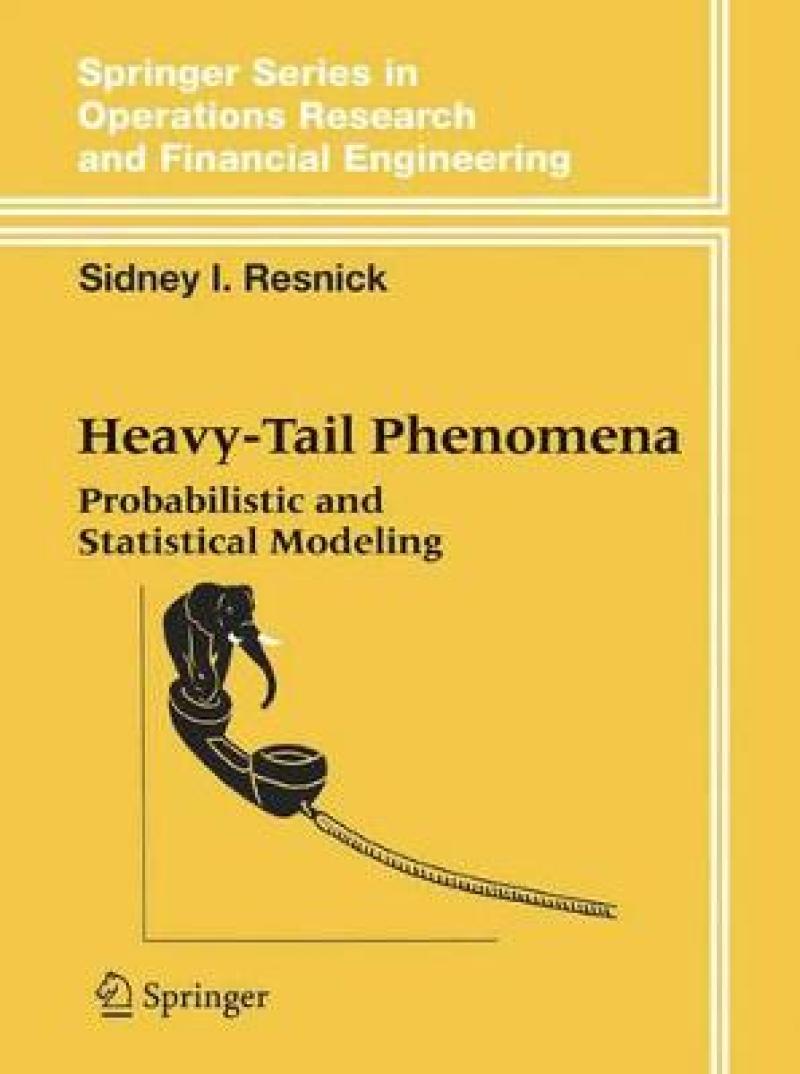From the reviews: "The book is divided into three general parts covering introduction, probability and statistics. ... Exercises are provided at the end of each chapter. Naturally all of the exercises are technical and proof based. Doing the exercises will greatly improve the understanding of the subject. ... The book is suitable for graduate students in mathematical finance, finance, operations research and other similar fields. It should also be of great value to practitioners in finance ... ." (Ita Cirovic Doney, MathDL, May, 2007) "The author has written this book in his own entertaining, elegant, reader-friendly and at the same time fully rigorous style. ... This book will be valued both by newcomers to the theory of extreme values and by already established researchers as a reference source and a chance to appreciate the author's own views on extremes and the related mathematical toolbox. ... is a must for each serious mathematical library, and it will surely find its place on personal bookshelves of many applied probabilists." (Ilya S. Molchanov, Mathematical Reviews, Issue 2008 j) "'This is a survey of the mathematical, probabilistic and statistical tools used in heavy-tail analysis as well as some examples of their use.' ... This book could be used very conveniently for a Masters-level course in point processes or regular variation; theoretical concepts are introduced in a pedagogical way, and several exercises accompany each chapter. Researchers in applied probability or statistics will also benefit from reading this book. It cleverly mixes probabilistic modeling and statistical methodology with powerful mathematical tools." (Anne-Laure Fougeres and Philippe Soulier, SIAM Review, Vol. 50 (2), 2008) "This book does the job of presenting the general problematic and providing tools for solving the study of the related models, successfully. ... Altogether the book has 11 chapters and a series of illustrative examples coming from real life, which are discussed, and a list of exercises are proposed in each chapter. The book will certainly be useful for mathematicians, engineers, economists, and other specialists coping with heavy-tailed problems." (C. Bouza, Journal of the Operational Research Society, Vol. 61 (12), 2010)
This comprehensive text gives an interesting and useful blend of the mathematical, probabilistic and statistical tools used in heavy-tail analysis. Heavy tails are characteristic of phenomena where there is a significant probability of a single huge value impacting system behavior. Record-breaking insurance losses, financial returns, sizes of files stored on a server, transmission rates of files are all examples of heavy-tailed phenomena.
Key features:
Unique text devoted to heavy-tails.
The treatment of heavy tails is largely dimensionless.
The text gives attention to both probability modeling and statistical methods for fitting models. Most other books focus on one or the other but not both.
The book emphasizes the broad applicability of heavy-tails to the fields of finance (e.g., value-at- risk), data networks, insurance.
The presentation is clear, efficient and coherent and, balances theory and data analysis to show the applicability andlimitations of certain methods.
Several chapters examine in detail the mathematical properties of the methodologies as well as their implementation in the Splus or R statistical languages.
The exposition is driven by numerous examples and exercises.
Prerequisites for the reader include a prior course in stochastic processes and probability, some statistical background, some familiarity with time series analysis, and ability to use (or at least to learn) a statistics package such as R or Splus. This work will serve second-year graduate students and researchers in the areas of operations research, statistics, applied mathematics, electrical engineering, financial engineering, networking and economics.
Sidney Resnick is a Professor at Cornell University and has written several well-known bestsellers: A Probability Path (ISBN: 081764055X), Adventures in Stochastic Processes (ISBN: 0817635912) and Extreme Values, Regular Variation, and Point Processes (ISBN: 0387964819).
